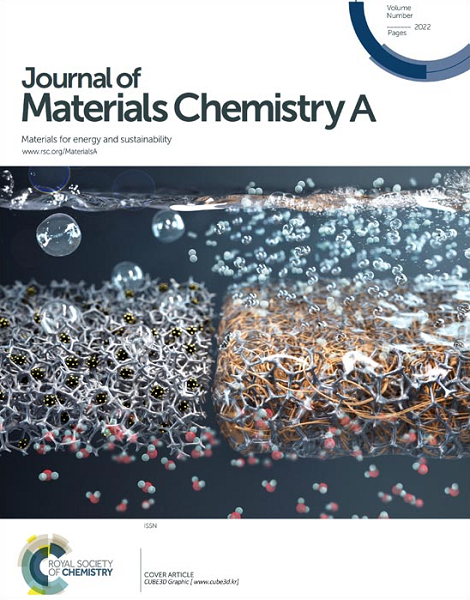Hybrid Central Substitution of Acceptor Boosts Efficient Near-Infrared Organic Photovoltaics
IF 10.7
2区 材料科学
Q1 CHEMISTRY, PHYSICAL
引用次数: 0
Abstract
Near-infrared (NIR) organic photovoltaic molecules are usually restricted by the “energy-gap-law”, thus rendering it greatly challenging to achieve organic solar cells (OSCs) with large open-circuit voltages (VOC) and NIR absorptions simultaneously. Herein, a synergistic strategy of hybrid central substitution on acceptors is developed, with electron-donating methyl/methoxy achieving NIR absorptions while electron-withdrawing bromine inducing favorable molecular packings. A single crystal analysis reveals the rarely observed OC-H∙∙∙S non-covalent interaction and potentially beneficial entanglement of alkyl chains in CH29 with central methoxy. Consequently, the OSC of CH29 reaches both the excellent VOC of 884 mV and short-circuit current density of 28.30 mA/cm2 under a quite narrow optical bandgap of ~1.33 eV, meanwhile, almost the smallest energy loss in high-performance OSC systems. Our successful attempt at hybrid central substitution provides a feasible pathway to construct high-performance NIR acceptors, essential to record-breaking OSCs, especially for rear cells of tandem devices that require high VOC and broad photoelectric response simultaneously.求助全文
约1分钟内获得全文
求助全文
来源期刊

Journal of Materials Chemistry A
CHEMISTRY, PHYSICAL-ENERGY & FUELS
CiteScore
19.50
自引率
5.00%
发文量
1892
审稿时长
1.5 months
期刊介绍:
The Journal of Materials Chemistry A, B & C covers a wide range of high-quality studies in the field of materials chemistry, with each section focusing on specific applications of the materials studied. Journal of Materials Chemistry A emphasizes applications in energy and sustainability, including topics such as artificial photosynthesis, batteries, and fuel cells. Journal of Materials Chemistry B focuses on applications in biology and medicine, while Journal of Materials Chemistry C covers applications in optical, magnetic, and electronic devices. Example topic areas within the scope of Journal of Materials Chemistry A include catalysis, green/sustainable materials, sensors, and water treatment, among others.
 求助内容:
求助内容: 应助结果提醒方式:
应助结果提醒方式:


